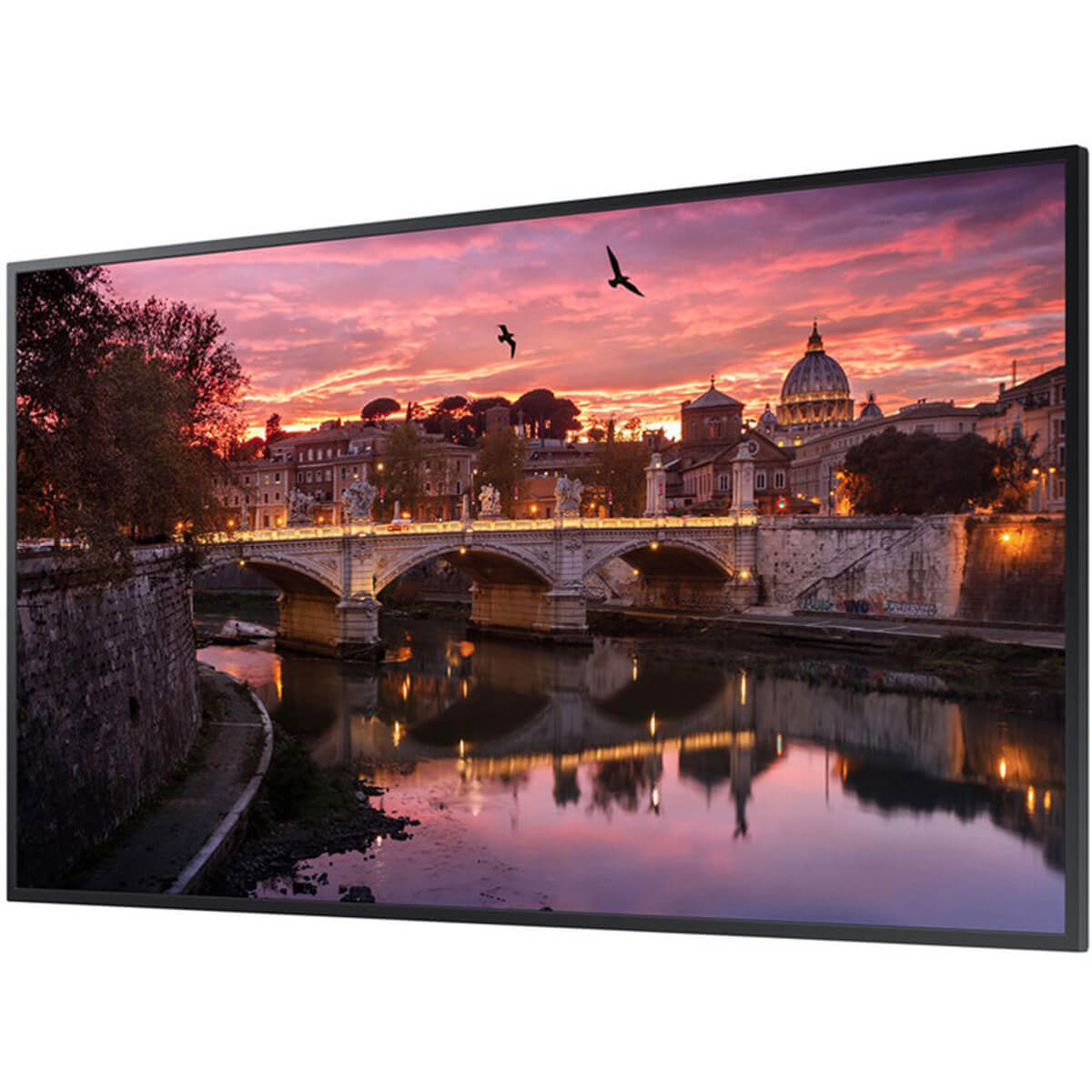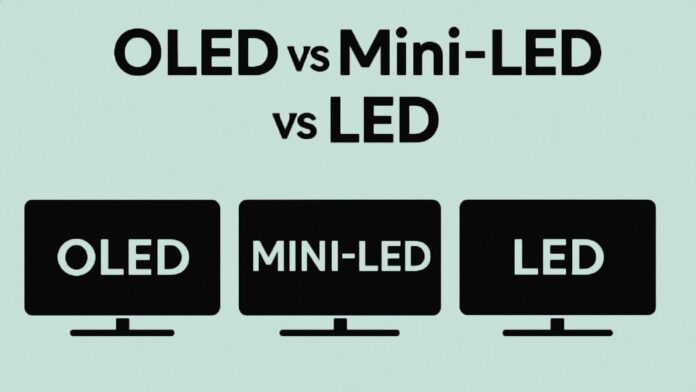Modern TVs are brighter, larger, and sharper than ever — but with these upgrades comes higher energy consumption. As 75-inch and even 85-inch screens become mainstream, choosing an energy-efficient TV matters more than ever — both for your electricity bill and the planet.
If you’re considering an OLED, mini-LED, or standard LED TV, knowing how each technology impacts energy use can help you make a more sustainable choice. Let’s dive into the efficiency differences between these leading TV types.

Samsung QB75R 75″ 4K UHD Commercial Smart Display
Stunning 75″ 4K UHD visuals, Dynamic Crystal Color, built-in Wi-Fi & Bluetooth, and Tizen 4.0 for seamless smart functionality.
*Prices and availability are subject to change without notice.
How Different TV Technologies Impact Energy Usage
LED: Always-On Backlight
Standard LED TVs, technically LED-lit LCDs, use an always-on backlight. Whether you’re watching a dark drama or a bright animation, the energy draw stays fairly constant. LED TVs are generally affordable but not the most energy-savvy, especially for larger screen sizes.
Mini-LED: Smarter Lighting Control
Mini-LED improves on traditional LED by shrinking the size of the LEDs, increasing their number, and enabling finer local dimming. This means darker areas of a scene require less backlight, saving some energy while delivering better contrast.
OLED: Pixels That Light Up Only When Needed
OLED technology stands apart with self-emissive pixels — each one turns on or off individually. Dark scenes consume far less power since black pixels are simply off. This gives OLED an edge in energy savings for standard dynamic range (SDR) content and dark viewing environments. However, under high brightness (like HDR content), OLED energy consumption can spike, sometimes even exceeding mini-LED.
Real-World Power Consumption: OLED vs Mini-LED vs LED
Data from RTINGS.com shows:
- In bright HDR scenes, OLEDs can use more power than LED or mini-LED.
- In SDR or darker scenes, OLEDs use less power.
- For example, a 75-inch LED TV typically consumes around 131W, while an OLED equivalent consumes about 134W — a close race.
Ultimately, your actual energy use will vary based on picture settings, content type, and daily watch time.
TV Energy Use Changes Over Tim
TV energy consumption isn’t static:
- OLED panels lose brightness over time, potentially lowering energy use unless users increase brightness to compensate.
- Mini-LED and LED TVs maintain stable brightness across their lifespan.
- Smart features like voice assistants or quick-start modes add a few watts in standby but can pile up over months.
Tips to Lower Your TV’s Energy Consumption
Regardless of the TV you choose, you can slash energy usage by:
- Enabling Eco or Energy Saving Modes
- Disabling always-on voice assistants and background updates
- Watching in darker rooms to reduce brightness needs
- Choosing smaller screen sizes (55–65 inches are ideal for efficiency)
Ambient light sensors, available on most high-end TVs, help adjust brightness automatically based on your room’s lighting conditions.
What Energy Labels Don’t Tell You
Energy labels use factory settings and SDR content for ratings. In real-world use, especially with HDR or vivid modes, actual energy use can be much higher. Always factor in your content habits, not just the label grade.
Which TV Brands Lead in Energy Efficiency?
- LG’s OLED Evo panels (C4 and G4 series) boast greater efficiency through improved materials and cooling systems.
- Samsung’s Neo QLED mini-LED TVs (like the QN90D) use AI-driven adaptive brightness and energy-saving modes to optimize power use.
Still, remember: the bigger the screen and the brighter the image, the more energy your TV consumes — regardless of brand or tech.
Bottom Line
Choosing between OLED, mini-LED, and LED comes down to your priorities. OLED shines for darker content and standard viewing. Mini-LED offers strong efficiency gains with bright HDR content. LED remains a solid budget option, but lags slightly in energy performance.
Opting for energy-saving modes and right-sizing your TV are your best bets for minimizing energy impact.

